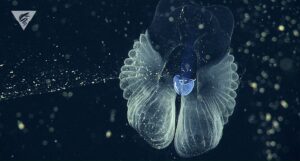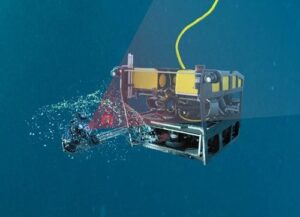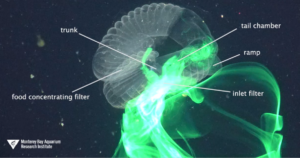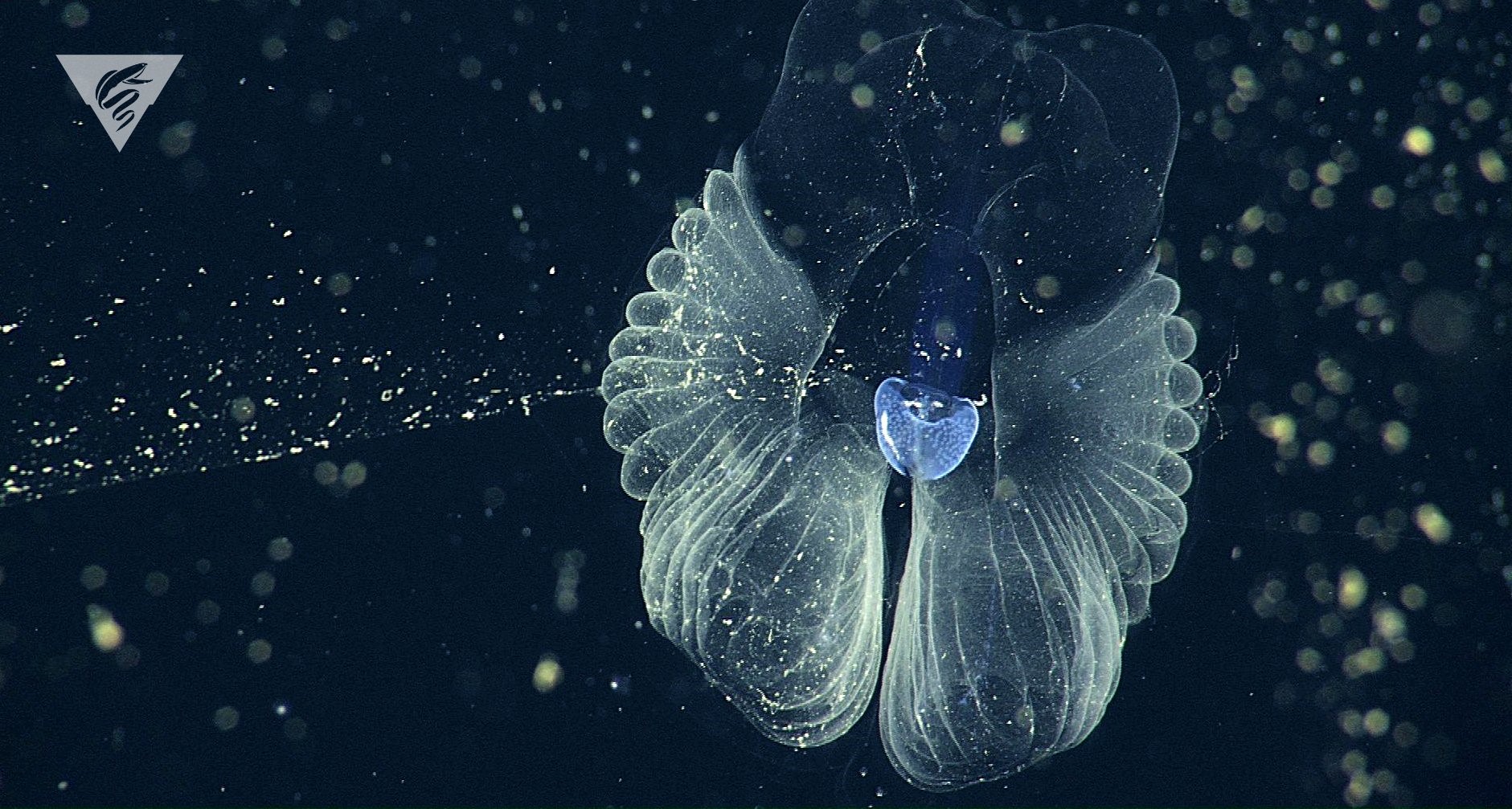Katija, K., Troni, G., Daniels, J. et al. Revealing enigmatic mucus structures in the deep sea using DeepPIV. Nature (2020). https://doi.org/10.1038/s41586-020-2345-2
Mysterious, tadpole-like creatures called giant larvaceans float around in balloons of mucus in the deep sea. Using new underwater laser-scanning technology, a team of engineers and scientists set out to study these animals in their palaces of snot.

Deep-sea giant larvaceans are small animals, about the size of your pinky finger, that live within balloon-like mucus structures up to 1 meter (3 feet) in diameter. These mesozooplankton can be found drifting throughout the world’s ocean basins.
The mucus structure housing the larvacean acts as an uber-efficient food-delivery service. It filters out carbon-rich particles from the surrounding seawater, funneling them to the larvacean’s mouth. Once the house becomes clogged, the larvacean sheds it. The discarded house sinks to the seafloor, carrying carbon-containing particles with it. This process moves carbon that originated as atmospheric carbon dioxide to the seafloor, where it may remain for millions of years. Giant larvaceans are therefore thought to play an important role in influencing atmospheric carbon dioxide levels, and hence global climate.
Despite their potentially outsized role in influencing the climate system, little is known about giant larvaceans. Lurking within their snot palaces, they are tricky creatures to study. Intact mucus houses are nearly impossible to collect or contain in a laboratory aquarium, because they tend to collapse if they encounter a net or a wall. To study these delicate structures, observations must be made on the larvaceans’ turf, in the deep sea.
Illuminating the Way
A team of scientists and engineers led by Kakani Katija set out to develop new technology to study mucus houses underwater. Until now, our understanding of these structures was limited to observations made outside the house. In 1976, oceanographer Alice Alldredge took photos of the mucus houses while scuba diving and used the images to create sketches of the creatures. In the early 1990s, researchers from MBARI used a remotely-operated vehicle to take videotape footage of the creatures, producing drawings that detailed the basic structure of the house.

In 2015, Katija and her team set out to develop an instrument that could elucidate what was going on inside the mucus houses. They adapted a lab technique called particle image velocimetry (PIV) for underwater use, coining their novel system DeepPIV. The system works by using a laser sheet to scan through mucus structures, while a camera captures cross-sectional images of the structure. Back in the lab, the image stacks can be used to generate 3-D reconstructions of the structures using modelling software.
[box]Particle Image Velocimetry (PIV) is a technique that has been used in labs for decades to study complex water flow patterns. Particles are added to the flow, the fluid illuminated so that the particles are visible, and a camera captures the motion of the particles. From these images, one can calculate the speed and direction of the flow. Unlike other techniques used to measure flows, PIV produces 2-D, or even 3-D, velocity fields.[/box]
The team mounted their new system on a remotely-operated vehicle (ROV), and tested it out in a series of dives in Monterey Bay, CA. They observed 71 larvacean specimens at depths of 100 to 400 meters (about 330 to 1300 feet). To gain insights into how the mucus structure acts to deliver food particles to the larvacean, they used dye to visualize fluid flow patterns through and within the structure.

The Larvacean’s Den
What the team found was astonishing. Using the underwater laser technology, they were able to peer into the maze-like structures and see chambers and passageways inside that no one knew had existed. From the dye visualizations, they were able to see how water enters the house, flows through internal chambers, and passes through the filter that retains food particles. They saw how, as the larvacean pumps its tail, these dense particle suspensions are then moved into its mouth.
“DeepPIV allowed us to look inside a complex structure that we had only seen from the outside before. As a result, we learned more about giant larvaceans during a single dive than we had in the previous couple of decades.”–MBARI Senior Scientist, Bruce Robison
The larvacean’s house also serves to protect the creature from predators. It could serve as a physical barrier to prevent the larvacean from coming into contact from jellyfish stings. The team also speculates that it could act as a “cloaking device”—they calculated that the flow escaping the house is a tiny fraction of that induced by the larvacean’s beating tail, making it harder for predators to detect.

House Hunters
These unprecedented observations of larvacean mucus houses, made possible by DeepPIV, are just the beginning. The research team is eager to solve other mucoid mysteries, such as how larvacean houses are constructed. While we know that larvaceans create their houses by secreting mucus and inflating it into a giant balloon, it is still unknown how the complex features of the structure unfold. Moreover, it is thought that each house only lasts a day or two, which, given their complexity, seems implausible. The team plans to document how frequently houses are constructed. Lessons learned from the larvacean architects could be used to build better pumping and filtration systems, and to help NASA engineers looking to build structures on the moon. ■
I am a Ph.D. candidate at Boston University where I am developing an underwater instrument to study the coastal ocean. I have a multi-disciplinary background in physics and oceanography (and some engineering), and my academic interests lie in using novel sensors and deployment platforms to study the ocean. Outside of my scholarly life, I enjoy keeping active through boxing and running and cycling around Boston.

